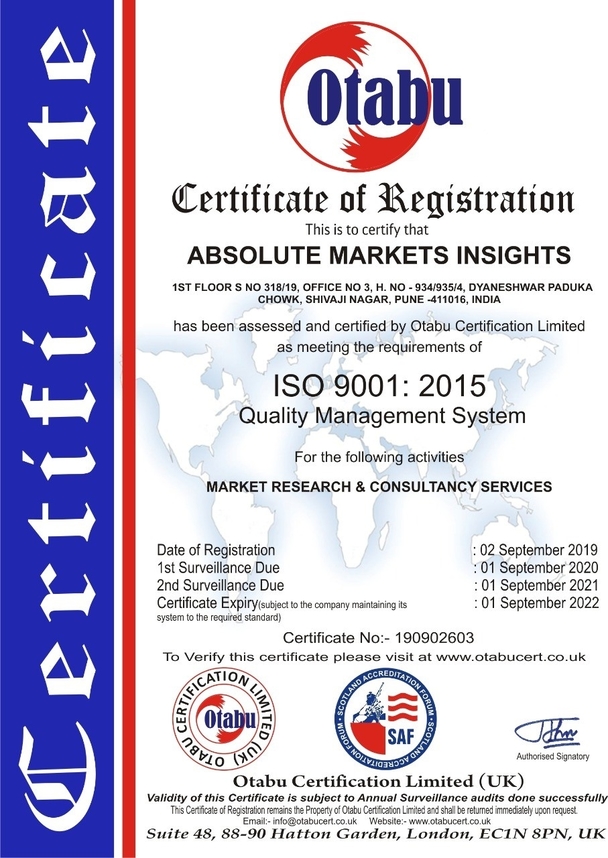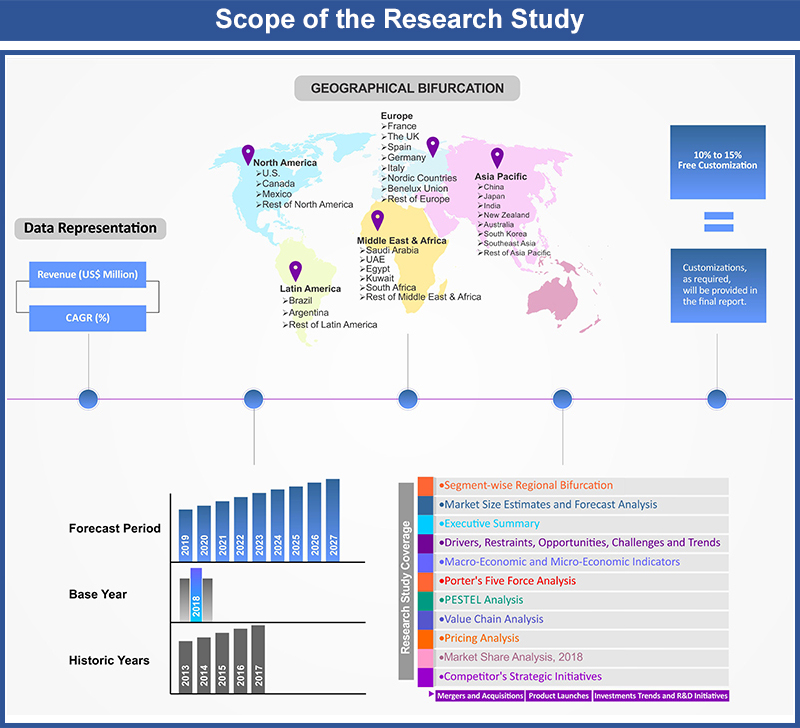Alfalfa Market By Product Type (Pellets, Bales, Cubes, Meal, and Others); By Animal Type (Ruminants, Equines, Poultry, and Others); By Distribution Channel (Direct and Indirect); By Region (North America (U.S., Canada, Mexico, & Rest Of North America), Europe (France, The UK, Spain, Germany, Italy, Nordic Countries (Denmark, Finland, Iceland, Sweden & Norway), Benelux Union (Belgium, The Netherlands, Luxembourg), & Rest of Europe), Asia Pacific (China, Japan, India, New Zealand, Australia, South Korea, Southeast Asia (Indonesia, Thailand, Malaysia, Singapore & Rest of Southeast Asia), & Rest of Asia Pacific), Middle East & Africa (Saudi Arabia, UAE, Egypt, Kuwait, South Africa, & Rest of Middle East & Africa) Latin America (Brazil, Argentina, & Rest of Latin America)) - Global Insights, Growth, Size, Comparative Analysis, Trends and Forecast, 2021 – 2029
Industry Trends
Alfalfa, known as Medicago sativa (in terms of scientific terminology), is a flowering plant of the pea family that is cultivated as a forage crop. In the United Kingdom, it is known as lucerne and in South Asia, it is known as lucerne grass. A key legume in the agriculture industry, alfalfa is called “Queen of the Forages”. In the global alfalfa market, the major driver contributing to the market growth is increasing demand of high quality hay for increasing milk production in dairy cattle. The benefits of alfalfa for cattle, such as high nutrient content and large amount of protein, are also contributing to the market growth. Consumption of alfalfa provides animals with lactation, reproduction, maintenance and growth. Availability of new crop varieties is also accelerating the market growth. New varieties such as low-lignin alfalfa are expected to increase the popularity of alfalfa among the growers. Due to scientific advancement in agriculture, 45 new varieties of alfalfa seeds are available. These seeds have been developed for multiple pest resistance, forage quality, and yield. As the markets for dairy products, meat products, and poultry products are growing all over the world, the animals that can provide these need to be adequately maintained and nutritiously fed with alfalfa feeds that are rich in fiber and protein. Farm owners also use alfalfa for the bioremediation of the soils that have a large content of nitrogen. Bioremediation facilitates the production of enzymes such as alpha amylase, cellulase, lignin peroxidase, and phytase. Hence, the versatile nature of alfalfa crop, enabling its use in multiple areas contributes to its high demand and growth of alfalfa market.
Changing water restrictions, government policies, and competition with high-value crops are some of the factors restraining the growth of global alfalfa market.
In March 2021, the findings of many studies related to alfalfa concluded that inclusion of alfalfa in ration products could aid higher milk protein production among dairy cattle. It could also improve the digestibility and intake of the cattle. In comparison to higher starch feeds, alfalfa could also reduce the risk for rumen acidosis because it was a great source of effective fiber as well as calcium.
For approximately half of the farmers in the world, livestock is a source of organic fertilizer. It enables them to respond to the growing demand for organically produced food products. Due to China-originated coronavirus, the supply for animal feed got disrupted but the demand for both food (derived from animals) and feed remained strong. Furthermore, the demand for alfalfa to feed cattle is expected to stay strong during the pandemic. In terms of revenue, alfalfa market was valued at US$ 22.07 Bn in 2020 growing at a CAGR of 5% over the forecast period (2021 – 2029). The study analyses the market in terms of revenue across all the major regions, which have been bifurcated into countries.
Global Alfalfa Market Revenue & Forecast, (US$ Million), 2021 – 2029
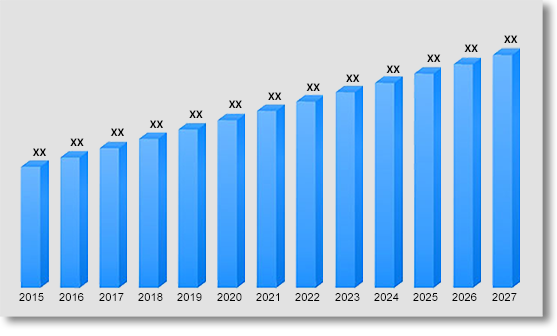
Product Type Outlook:
On the basis of product type, the global alfalfa market has been primarily segmented into pellets, bales, cubes, meal, and others. Pellets category accounted for the largest market share in 2020. Pellets are dehydrated alfalfa made from ground alfalfa hay. It is used as compound feed and pre-mixes that have been designed for birds, goats, horses, rabbits, sheep, etc. It contains protein, valuable vitamins and minerals. Primarily, it is used as feedstuff for cattle, pigs, and poultry. The growing demand for high-quality feed for ruminants is expected to drive the pellets market growth. However, meals category is expected to achieve tremendous growth in global alfalfa market during the forecast period.
Animal Type Outlook:
On the basis of animal type, the global alfalfa market has been segmented into ruminants, equines, poultry, and others. Ruminants category accounted for the largest share in the alfalfa market in 2020. During the forecast period, poultry category is estimated to become the fastest growing market category. Alfalfa is full of dried green leaves and offers many nutritional benefits to hens and chickens. Mini alfalfa hay bales and loose alfalfa hay are considered as best food for chickens by many poultry farm owners. According to research studies, low-fibre alfalfa meal (lucerne meal) in the laying-hen diet has proven to positively influence yolk quality without adversely affecting productive traits of eggs.
Distribution Channel Outlook:
Considering the distribution channel, the global alfalfa market has been segmented into direct distribution channels and indirect distribution channels. Direct distribution channels category was the largest market segment in 2020. For the longest time, the cattle farm owners and poultry farm owners have preferred to buy from original sources to ensure that animals and birds domesticated by them would get right kind of food as well as the right amount, which has contributed towards the segment’s growth in the global market. During the forecast period, indirect distribution channels category is expected to become fastest growing market segment.
Region Outlook:
North America accounted for a significant share in the global alfalfa market in 2020. However, during the forecast period, the Asia Pacific region is expected to witness highest growth rate. Japan is the chief importer of alfalfa hay from USA. After Japan, China and South Korea are the biggest importers, followed by other Asian Pacific countries. In the Asia Pacific region, the market is rapidly growing due to capacity building, improved agriculture, and increasing integration of modernized technology, which is boosting agricultural production. Intensive production technologies are also boosting the market growth.
Competitive Landscape Outlook:
The report provides both, qualitative as well as quantitative research of global alfalfa market. It also provides comprehensive insights and development methods adopted by the key contenders. The report also offers extensive research on the key players in this market and details on the competitiveness of these players. Key business strategies such as affiliations, collaborations, mergers & acquisitions (M&A), and contracts adopted by these major market participants are also recognized and analyzed in the report. For each company, the report studies their global presence, competitors, service offerings and specification amongst others.
Some of the players operating in the alfalfa market are Alfalfa Monegros, Anderson Hay & Grain Co. Inc., BORDER VALLEY TRADING, Green Prairie International Inc., Grupo Osés (Nafosa), Hindustan Animal Feeds, IVERINA STOCK FEEDS, SL Follen Company, The Accomazzo Company, and The Fertrell Company amongst other market participants.
Global Alfalfa Market:
By Product Type
- Pellets
- Bales
- Cubes
- Meal
- Others
By Animal Type
- Ruminants
- Equines
- Poultry
- Others
By Distribution Channel
- Direct
- Indirect
By Region
- Europe
- France
- The UK
- Spain
- Germany
- Italy
- Nordic Countries
- Denmark
- Finland
- Iceland
- Sweden
- Norway
- Benelux Union
- Belgium
- The Netherlands
- Luxembourg
- Rest of Europe
- Asia Pacific
- China
- Japan
- India
- New Zealand
- Australia
- South Korea
- Southeast Asia
- Indonesia
- Thailand
- Malaysia
- Singapore
- Rest of Southeast Asia
- Rest of Asia Pacific
- Middle East & Africa
- Saudi Arabia
- UAE
- Egypt
- Kuwait
- South Africa
- Rest of Middle East & Africa
- Latin America
- Brazil
- Argentina
- Rest of Latin America
- North America
- U.S.
- Canada
- Mexico
- Rest of North America
Table of Contents
Market Scope
1.1. Market
Segmentation
1.2. Years
Considered
1.2.1. Historic
Years: 2015 - 2019
1.2.2. Base
Year: 2020
1.2.3. Forecast
Years: 2021 – 2029
2. Key Target Audiences
3. Research Methodology
3.1. Primary
Research
3.1.1. Research
Questionnaire
3.1.2. Global
Percentage Breakdown
3.1.3. Primary
Interviews: Key Opinion Leaders (KOLs)
3.2. Secondary
Research
3.2.1. Paid
Databases
3.2.2. Secondary
Sources
3.3. Market
Size Estimates
3.3.1. Top-Down
Approach
3.3.2. Bottom-Up
Approach
3.4. Data
Triangulation Methodology
3.5. Research
Assumptions
4. Recommendations and Insights from AMI’s Perspective**
5. Holistic Overview of Alfalfa Market
6. Market Synopsis:
Alfalfa Market
7. Alfalfa Market Analysis: Qualitative Perspective
7.1. Introduction
7.1.1. Product
Definition
7.1.2. Industry
Development
7.2. Market
Dynamics
7.2.1. Drivers
7.2.2. Restraints
7.2.3. Opportunities
7.3. Trends in
Alfalfa Market
7.4. Market
Determinants Radar Chart
7.5. Macro-Economic
and Micro-Economic Indicators: Alfalfa Market
7.6. Porter’s
Five Force Analysis
7.7. Impact of
Covid-19 on Alfalfa Market
8. Global Alfalfa Market Analysis and Forecasts, 2021 – 2029
8.1. Overview
8.1.1. Global
Alfalfa Market Revenue (US$ Mn)
8.2. Global
Alfalfa Market Revenue (US$ Mn) and Forecasts, By Product Type
8.2.1. Pellets
8.2.1.1. Definition
8.2.1.2. Market Estimation and Penetration, 2015 - 2020
8.2.1.3. Market Forecast, 2021 - 2029
8.2.1.4. Compound Annual Growth Rate (CAGR)
8.2.1.5. Regional Bifurcation
8.2.1.5.1. North America
8.2.1.5.1.1. Market
Estimation, 2015 - 2020
8.2.1.5.1.2. Market
Forecast, 2021 - 2029
8.2.1.5.2. Europe
8.2.1.5.2.1. Market
Estimation, 2015 - 2020
8.2.1.5.2.2. Market
Forecast, 2021 - 2029
8.2.1.5.3. Asia Pacific
8.2.1.5.3.1. Market
Estimation, 2015 - 2020
8.2.1.5.3.2. Market
Forecast, 2021 - 2029
8.2.1.5.4. Middle East and Africa
8.2.1.5.4.1. Market
Estimation, 2015 - 2020
8.2.1.5.4.2. Market
Forecast, 2021 - 2029
8.2.1.5.5. Latin America
8.2.1.5.5.1. Market
Estimation, 2015 - 2020
8.2.1.5.5.2. Market
Forecast, 2021 - 2029
8.2.2. Bales
8.2.2.1. Definition
8.2.2.2. Market Estimation and Penetration, 2015 - 2020
8.2.2.3. Market Forecast, 2021 - 2029
8.2.2.4. Compound Annual Growth Rate (CAGR)
8.2.2.5. Regional Bifurcation
8.2.2.5.1. North America
8.2.2.5.1.1. Market
Estimation, 2015 - 2020
8.2.2.5.1.2. Market
Forecast, 2021 - 2029
8.2.2.5.2. Europe
8.2.2.5.2.1. Market
Estimation, 2015 - 2020
8.2.2.5.2.2. Market
Forecast, 2021 - 2029
8.2.2.5.3. Asia Pacific
8.2.2.5.3.1. Market
Estimation, 2015 - 2020
8.2.2.5.3.2. Market
Forecast, 2021 - 2029
8.2.2.5.4. Middle East and Africa
8.2.2.5.4.1. Market
Estimation, 2015 - 2020
8.2.2.5.4.2. Market
Forecast, 2021 - 2029
8.2.2.5.5. Latin America
8.2.2.5.5.1. Market
Estimation, 2015 - 2020
8.2.2.5.5.2. Market
Forecast, 2021 - 2029
8.2.3. Cubes
8.2.3.1. Definition
8.2.3.2. Market Estimation and Penetration, 2015 - 2020
8.2.3.3. Market Forecast, 2021 - 2029
8.2.3.4. Compound Annual Growth Rate (CAGR)
8.2.3.5. Regional Bifurcation
8.2.3.5.1. North America
8.2.3.5.1.1. Market
Estimation, 2015 - 2020
8.2.3.5.1.2. Market
Forecast, 2021 - 2029
8.2.3.5.2. Europe
8.2.3.5.2.1. Market
Estimation, 2015 - 2020
8.2.3.5.2.2. Market
Forecast, 2021 - 2029
8.2.3.5.3. Asia Pacific
8.2.3.5.3.1. Market
Estimation, 2015 - 2020
8.2.3.5.3.2. Market
Forecast, 2021 - 2029
8.2.3.5.4. Middle East and Africa
8.2.3.5.4.1. Market
Estimation, 2015 - 2020
8.2.3.5.4.2. Market
Forecast, 2021 - 2029
8.2.3.5.5. Latin America
8.2.3.5.5.1. Market
Estimation, 2015 - 2020
8.2.3.5.5.2. Market
Forecast, 2021 - 2029
8.2.4. Meal
8.2.4.1. Definition
8.2.4.2. Market Estimation and Penetration, 2015 - 2020
8.2.4.3. Market Forecast, 2021 - 2029
8.2.4.4. Compound Annual Growth Rate (CAGR)
8.2.4.5. Regional Bifurcation
8.2.4.5.1. North America
8.2.4.5.1.1. Market
Estimation, 2015 - 2020
8.2.4.5.1.2. Market
Forecast, 2021 - 2029
8.2.4.5.2. Europe
8.2.4.5.2.1. Market
Estimation, 2015 - 2020
8.2.4.5.2.2. Market
Forecast, 2021 - 2029
8.2.4.5.3. Asia Pacific
8.2.4.5.3.1. Market
Estimation, 2015 - 2020
8.2.4.5.3.2. Market
Forecast, 2021 - 2029
8.2.4.5.4. Middle East and Africa
8.2.4.5.4.1. Market
Estimation, 2015 - 2020
8.2.4.5.4.2. Market
Forecast, 2021 - 2029
8.2.4.5.5. Latin America
8.2.4.5.5.1. Market
Estimation, 2015 - 2020
8.2.4.5.5.2. Market
Forecast, 2021 - 2029
8.2.5. Others
8.2.5.1. Definition
8.2.5.2. Market Estimation and Penetration, 2015 - 2020
8.2.5.3. Market Forecast, 2021 - 2029
8.2.5.4. Compound Annual Growth Rate (CAGR)
8.2.5.5. Regional Bifurcation
8.2.5.5.1. North America
8.2.5.5.1.1. Market
Estimation, 2015 - 2020
8.2.5.5.1.2. Market
Forecast, 2021 - 2029
8.2.5.5.2. Europe
8.2.5.5.2.1. Market
Estimation, 2015 - 2020
8.2.5.5.2.2. Market
Forecast, 2021 - 2029
8.2.5.5.3. Asia Pacific
8.2.5.5.3.1. Market
Estimation, 2015 - 2020
8.2.5.5.3.2. Market
Forecast, 2021 - 2029
8.2.5.5.4. Middle East and Africa
8.2.5.5.4.1. Market
Estimation, 2015 - 2020
8.2.5.5.4.2. Market
Forecast, 2021 - 2029
8.2.5.5.5. Latin America
8.2.5.5.5.1. Market
Estimation, 2015 - 2020
8.2.5.5.5.2. Market
Forecast, 2021 - 2029
8.3. Key
Segment for Channeling Investments
8.3.1. By
Product Type
9. Global Alfalfa Market Analysis and Forecasts, 2021 – 2029
9.1. Overview
9.2. Global
Alfalfa Market Revenue (US$ Mn) and Forecasts, By Animal Type
9.2.1. Ruminants
9.2.1.1. Definition
9.2.1.2. Market Estimation and Penetration, 2015 - 2020
9.2.1.3. Market Forecast, 2021 - 2029
9.2.1.4. Compound Annual Growth Rate (CAGR)
9.2.1.5. Regional Bifurcation
9.2.1.5.1. North America
9.2.1.5.1.1. Market
Estimation, 2015 - 2020
9.2.1.5.1.2. Market
Forecast, 2021 - 2029
9.2.1.5.2. Europe
9.2.1.5.2.1. Market
Estimation, 2015 - 2020
9.2.1.5.2.2. Market
Forecast, 2021 - 2029
9.2.1.5.3. Asia Pacific
9.2.1.5.3.1. Market
Estimation, 2015 - 2020
9.2.1.5.3.2. Market
Forecast, 2021 - 2029
9.2.1.5.4. Middle East and Africa
9.2.1.5.4.1. Market
Estimation, 2015 - 2020
9.2.1.5.4.2. Market
Forecast, 2021 - 2029
9.2.1.5.5. Latin America
9.2.1.5.5.1. Market
Estimation, 2015 - 2020
9.2.1.5.5.2. Market
Forecast, 2021 - 2029
9.2.2. Equines
9.2.2.1. Definition
9.2.2.2. Market Estimation and Penetration, 2015 - 2020
9.2.2.3. Market Forecast, 2021 - 2029
9.2.2.4. Compound Annual Growth Rate (CAGR)
9.2.2.5. Regional Bifurcation
9.2.2.5.1. North America
9.2.2.5.1.1. Market
Estimation, 2015 - 2020
9.2.2.5.1.2. Market
Forecast, 2021 - 2029
9.2.2.5.2. Europe
9.2.2.5.2.1. Market
Estimation, 2015 - 2020
9.2.2.5.2.2. Market
Forecast, 2021 - 2029
9.2.2.5.3. Asia Pacific
9.2.2.5.3.1. Market
Estimation, 2015 - 2020
9.2.2.5.3.2. Market
Forecast, 2021 - 2029
9.2.2.5.4. Middle East and Africa
9.2.2.5.4.1. Market
Estimation, 2015 - 2020
9.2.2.5.4.2. Market
Forecast, 2021 - 2029
9.2.2.5.5. Latin America
9.2.2.5.5.1. Market
Estimation, 2015 - 2020
9.2.2.5.5.2. Market
Forecast, 2021 - 2029
9.2.3. Poultry
9.2.3.1. Definition
9.2.3.2. Market Estimation and Penetration, 2015 - 2020
9.2.3.3. Market Forecast, 2021 - 2029
9.2.3.4. Compound Annual Growth Rate (CAGR)
9.2.3.5. Regional Bifurcation
9.2.3.5.1. North America
9.2.3.5.1.1. Market
Estimation, 2015 - 2020
9.2.3.5.1.2. Market
Forecast, 2021 - 2029
9.2.3.5.2. Europe
9.2.3.5.2.1. Market
Estimation, 2015 - 2020
9.2.3.5.2.2. Market
Forecast, 2021 - 2029
9.2.3.5.3. Asia Pacific
9.2.3.5.3.1. Market
Estimation, 2015 - 2020
9.2.3.5.3.2. Market
Forecast, 2021 - 2029
9.2.3.5.4. Middle East and Africa
9.2.3.5.4.1. Market
Estimation, 2015 - 2020
9.2.3.5.4.2. Market
Forecast, 2021 - 2029
9.2.3.5.5. Latin America
9.2.3.5.5.1. Market
Estimation, 2015 - 2020
9.2.3.5.5.2. Market
Forecast, 2021 - 2029
9.2.4. Others
9.2.4.1. Definition
9.2.4.2. Market Estimation and Penetration, 2015 - 2020
9.2.4.3. Market Forecast, 2021 - 2029
9.2.4.4. Compound Annual Growth Rate (CAGR)
9.2.4.5. Regional Bifurcation
9.2.4.5.1. North America
9.2.4.5.1.1. Market
Estimation, 2015 - 2020
9.2.4.5.1.2. Market
Forecast, 2021 - 2029
9.2.4.5.2. Europe
9.2.4.5.2.1. Market
Estimation, 2015 - 2020
9.2.4.5.2.2. Market
Forecast, 2021 - 2029
9.2.4.5.3. Asia Pacific
9.2.4.5.3.1. Market
Estimation, 2015 - 2020
9.2.4.5.3.2. Market
Forecast, 2021 - 2029
9.2.4.5.4. Middle East and Africa
9.2.4.5.4.1. Market
Estimation, 2015 - 2020
9.2.4.5.4.2. Market
Forecast, 2021 - 2029
9.2.4.5.5. Latin America
9.2.4.5.5.1. Market
Estimation, 2015 - 2020
9.2.4.5.5.2. Market
Forecast, 2021 - 2029
9.3. Key
Segment for Channeling Investments
9.3.1. By
Animal Type
10. Global Alfalfa Market Analysis and Forecasts, 2021 – 2029
10.1. Overview
10.2. Global
Alfalfa Market Revenue (US$ Mn) and Forecasts, By Distribution Channel
10.2.1. Direct
10.2.1.1. Definition
10.2.1.2. Market Estimation and Penetration, 2015 - 2020
10.2.1.3. Market Forecast, 2021 - 2029
10.2.1.4. Compound Annual Growth Rate (CAGR)
10.2.1.5. Regional Bifurcation
10.2.1.5.1. North America
10.2.1.5.1.1. Market
Estimation, 2015 - 2020
10.2.1.5.1.2. Market
Forecast, 2021 - 2029
10.2.1.5.2. Europe
10.2.1.5.2.1. Market
Estimation, 2015 - 2020
10.2.1.5.2.2. Market
Forecast, 2021 - 2029
10.2.1.5.3. Asia Pacific
10.2.1.5.3.1. Market
Estimation, 2015 - 2020
10.2.1.5.3.2. Market
Forecast, 2021 - 2029
10.2.1.5.4. Middle East and Africa
10.2.1.5.4.1. Market
Estimation, 2015 - 2020
10.2.1.5.4.2. Market
Forecast, 2021 - 2029
10.2.1.5.5. Latin America
10.2.1.5.5.1. Market
Estimation, 2015 - 2020
10.2.1.5.5.2. Market
Forecast, 2021 - 2029
10.2.2. Indirect
10.2.2.1. Definition
10.2.2.2. Market Estimation and Penetration, 2015 - 2020
10.2.2.3. Market Forecast, 2021 - 2029
10.2.2.4. Compound Annual Growth Rate (CAGR)
10.2.2.5. Regional Bifurcation
10.2.2.5.1. North America
10.2.2.5.1.1. Market
Estimation, 2015 - 2020
10.2.2.5.1.2. Market
Forecast, 2021 - 2029
10.2.2.5.2. Europe
10.2.2.5.2.1. Market
Estimation, 2015 - 2020
10.2.2.5.2.2. Market
Forecast, 2021 - 2029
10.2.2.5.3. Asia Pacific
10.2.2.5.3.1. Market
Estimation, 2015 - 2020
10.2.2.5.3.2. Market
Forecast, 2021 - 2029
10.2.2.5.4. Middle East and Africa
10.2.2.5.4.1. Market
Estimation, 2015 - 2020
10.2.2.5.4.2. Market
Forecast, 2021 - 2029
10.2.2.5.5. Latin America
10.2.2.5.5.1. Market
Estimation, 2015 - 2020
10.2.2.5.5.2. Market
Forecast, 2021 - 2029
10.3. Key
Segment for Channeling Investments
10.3.1. By
Distribution Channel
11. North America Alfalfa Market Analysis and Forecasts, 2021 -
2029
11.1. Overview
11.1.1. North
America Alfalfa Market Revenue (US$ Mn)
11.2. North
America Alfalfa Market Revenue (US$ Mn) and Forecasts, By Product Type
11.2.1. Pellets
11.2.2. Bales
11.2.3. Cubes
11.2.4. Meal
11.2.5. Others
11.3. North
America Alfalfa Market Revenue (US$ Mn) and Forecasts, By Animal Type
11.3.1. Ruminants
11.3.2. Equines
11.3.3. Poultry
11.3.4. Others
11.4. North
America Alfalfa Market Revenue (US$ Mn) and Forecasts, By Distribution Channel
11.4.1. Direct
11.4.2. Indirect
11.5. North
America Alfalfa Market Revenue (US$ Mn) and Forecasts, By Country
11.5.1. U.S
11.5.1.1. U.S Alfalfa Market Revenue (US$ Mn) and Forecasts, By Product
Type
11.5.1.1.1. Pellets
11.5.1.1.2. Bales
11.5.1.1.3. Cubes
11.5.1.1.4. Meal
11.5.1.1.5. Others
11.5.1.2. U.S Alfalfa Market Revenue (US$ Mn) and Forecasts, By Animal
Type
11.5.1.2.1. Ruminants
11.5.1.2.2. Equines
11.5.1.2.3. Poultry
11.5.1.2.4. Others
11.5.1.3. U.S Alfalfa Market Revenue (US$ Mn) and Forecasts, By
Distribution Channel
11.5.1.3.1. Direct
11.5.1.3.2. Indirect
11.5.2. Canada
11.5.2.1. Canada Alfalfa Market Revenue (US$ Mn) and Forecasts, By
Product Type
11.5.2.1.1. Pellets
11.5.2.1.2. Bales
11.5.2.1.3. Cubes
11.5.2.1.4. Meal
11.5.2.1.5. Others
11.5.2.2. Canada Alfalfa Market Revenue (US$ Mn) and Forecasts, By
Animal Type
11.5.2.2.1. Ruminants
11.5.2.2.2. Equines
11.5.2.2.3. Poultry
11.5.2.2.4. Others
11.5.2.3. Canada Alfalfa Market Revenue (US$ Mn) and Forecasts, By Distribution
Channel
11.5.2.3.1. Direct
11.5.2.3.2. Indirect
11.5.3. Mexico
11.5.3.1. Mexico Alfalfa Market Revenue (US$ Mn) and Forecasts, By
Product Type
11.5.3.1.1. Pellets
11.5.3.1.2. Bales
11.5.3.1.3. Cubes
11.5.3.1.4. Meal
11.5.3.1.5. Others
11.5.3.2. Mexico Alfalfa Market Revenue (US$ Mn) and Forecasts, By
Animal Type
11.5.3.2.1. Ruminants
11.5.3.2.2. Equines
11.5.3.2.3. Poultry
11.5.3.2.4. Others
11.5.3.3. Mexico Alfalfa Market Revenue (US$ Mn) and Forecasts, By
Distribution Channel
11.5.3.3.1. Direct
11.5.3.3.2. Indirect
11.5.4. Rest of
North America
11.5.4.1. Rest of North America Alfalfa Market Revenue (US$ Mn) and
Forecasts, By Product Type
11.5.4.1.1. Pellets
11.5.4.1.2. Bales
11.5.4.1.3. Cubes
11.5.4.1.4. Meal
11.5.4.1.5. Others
11.5.4.2. Rest of North America Alfalfa Market Revenue (US$ Mn) and
Forecasts, By Animal Type
11.5.4.2.1. Ruminants
11.5.4.2.2. Equines
11.5.4.2.3. Poultry
11.5.4.2.4. Others
11.5.4.3. Rest of North America Alfalfa Market Revenue (US$ Mn) and
Forecasts, By Distribution Channel
11.5.4.3.1. Direct
11.5.4.3.2. Indirect
11.6. Key
Segment for Channeling Investments
11.6.1. By Country
11.6.2. By
Product Type
11.6.3. By
Animal Type
11.6.4. By
Distribution Channel
12. Europe Alfalfa Market Analysis and Forecasts, 2021 - 2029
12.1. Overview
12.1.1. Europe
Alfalfa Market Revenue (US$ Mn)
12.2. Europe
Alfalfa Market Revenue (US$ Mn) and Forecasts, By Product Type
12.2.1. Pellets
12.2.2. Bales
12.2.3. Cubes
12.2.4. Meal
12.2.5. Others
12.3. Europe
Alfalfa Market Revenue (US$ Mn) and Forecasts, By Animal Type
12.3.1. Ruminants
12.3.2. Equines
12.3.3. Poultry
12.3.4. Others
12.4. Europe
Alfalfa Market Revenue (US$ Mn) and Forecasts, By Distribution Channel
12.4.1. Direct
12.4.2. Indirect
12.5. Europe
Alfalfa Market Revenue (US$ Mn) and Forecasts, By Country
12.5.1. France
12.5.1.1. France Alfalfa Market Revenue (US$ Mn) and Forecasts, By
Product Type
12.5.1.1.1. Pellets
12.5.1.1.2. Bales
12.5.1.1.3. Cubes
12.5.1.1.4. Meal
12.5.1.1.5. Others
12.5.1.2. France Alfalfa Market Revenue (US$ Mn) and Forecasts, By
Animal Type
12.5.1.2.1. Ruminants
12.5.1.2.2. Equines
12.5.1.2.3. Poultry
12.5.1.2.4. Others
12.5.1.3. France Alfalfa Market Revenue (US$ Mn) and Forecasts, By
Distribution Channel
12.5.1.3.1. Direct
12.5.1.3.2. Indirect
12.5.2. The UK
12.5.2.1. The UK Alfalfa Market Revenue (US$ Mn) and Forecasts, By
Product Type
12.5.2.1.1. Pellets
12.5.2.1.2. Bales
12.5.2.1.3. Cubes
12.5.2.1.4. Meal
12.5.2.1.5. Others
12.5.2.2. The UK Alfalfa Market Revenue (US$ Mn) and Forecasts, By
Animal Type
12.5.2.2.1. Ruminants
12.5.2.2.2. Equines
12.5.2.2.3. Poultry
12.5.2.2.4. Others
12.5.2.3. The UK Alfalfa Market Revenue (US$ Mn) and Forecasts, By
Distribution Channel
12.5.2.3.1. Direct
12.5.2.3.2. Indirect
12.5.3. Spain
12.5.3.1. Spain Alfalfa Market Revenue (US$ Mn) and Forecasts, By
Product Type
12.5.3.1.1. Pellets
12.5.3.1.2. Bales
12.5.3.1.3. Cubes
12.5.3.1.4. Meal
12.5.3.1.5. Others
12.5.3.2. Spain Alfalfa Market Revenue (US$ Mn) and Forecasts, By Animal
Type
12.5.3.2.1. Ruminants
12.5.3.2.2. Equines
12.5.3.2.3. Poultry
12.5.3.2.4. Others
12.5.3.3. Spain Alfalfa Market Revenue (US$ Mn) and Forecasts, By
Distribution Channel
12.5.3.3.1. Direct
12.5.3.3.2. Indirect
12.5.4. Germany
12.5.4.1. Germany Alfalfa Market Revenue (US$ Mn) and Forecasts, By
Product Type
12.5.4.1.1. Pellets
12.5.4.1.2. Bales
12.5.4.1.3. Cubes
12.5.4.1.4. Meal
12.5.4.1.5. Others
12.5.4.2. Germany Alfalfa Market Revenue (US$ Mn) and Forecasts, By
Animal Type
12.5.4.2.1. Ruminants
12.5.4.2.2. Equines
12.5.4.2.3. Poultry
12.5.4.2.4. Others
12.5.4.3. Germany Alfalfa Market Revenue (US$ Mn) and Forecasts, By
Distribution Channel
12.5.4.3.1. Direct
12.5.4.3.2. Indirect
12.5.5. Italy
12.5.5.1. Italy Alfalfa Market Revenue (US$ Mn) and Forecasts, By
Product Type
12.5.5.1.1. Pellets
12.5.5.1.2. Bales
12.5.5.1.3. Cubes
12.5.5.1.4. Meal
12.5.5.1.5. Others
12.5.5.2. Italy Alfalfa Market Revenue (US$ Mn) and Forecasts, By Animal
Type
12.5.5.2.1. Ruminants
12.5.5.2.2. Equines
12.5.5.2.3. Poultry
12.5.5.2.4. Others
12.5.5.3. Italy Alfalfa Market Revenue (US$ Mn) and Forecasts, By
Distribution Channel
12.5.5.3.1. Direct
12.5.5.3.2. Indirect
12.5.6. Nordic
Countries
12.5.6.1. Nordic Countries Alfalfa Market Revenue (US$ Mn) and
Forecasts, By Product Type
12.5.6.1.1. Pellets
12.5.6.1.2. Bales
12.5.6.1.3. Cubes
12.5.6.1.4. Meal
12.5.6.1.5. Others
12.5.6.2. Nordic Countries Alfalfa Market Revenue (US$ Mn) and
Forecasts, By Animal Type
12.5.6.2.1. Ruminants
12.5.6.2.2. Equines
12.5.6.2.3. Poultry
12.5.6.2.4. Others
12.5.6.3. Nordic Countries Alfalfa Market Revenue (US$ Mn) and
Forecasts, By Distribution Channel
12.5.6.3.1. Direct
12.5.6.3.2. Indirect
12.5.6.4. Nordic Countries Alfalfa Market Revenue (US$ Mn) and
Forecasts, By Country
12.5.6.4.1. Denmark
12.5.6.4.2. Finland
12.5.6.4.3. Iceland
12.5.6.4.4. Sweden
12.5.6.4.5. Norway
12.5.7. Benelux
Union
12.5.7.1. Benelux Union Alfalfa Market Revenue (US$ Mn) and Forecasts,
By Product Type
12.5.7.1.1. Pellets
12.5.7.1.2. Bales
12.5.7.1.3. Cubes
12.5.7.1.4. Meal
12.5.7.1.5. Others
12.5.7.2. Benelux Union Alfalfa Market Revenue (US$ Mn) and Forecasts,
By Animal Type
12.5.7.2.1. Ruminants
12.5.7.2.2. Equines
12.5.7.2.3. Poultry
12.5.7.2.4. Others
12.5.7.3. Benelux Union Alfalfa Market Revenue (US$ Mn) and Forecasts,
By Distribution Channel
12.5.7.3.1. Direct
12.5.7.3.2. Indirect
12.5.7.4. Benelux Union Alfalfa Market Revenue (US$ Mn) and Forecasts,
By Country
12.5.7.4.1. Belgium
12.5.7.4.2. The Netherlands
12.5.7.4.3. Luxembourg
12.5.8. Rest of
Europe
12.5.8.1. Rest of Europe Alfalfa Market Revenue (US$ Mn) and Forecasts,
By Product Type
12.5.8.1.1. Pellets
12.5.8.1.2. Bales
12.5.8.1.3. Cubes
12.5.8.1.4. Meal
12.5.8.1.5. Others
12.5.8.2. Rest of Europe Alfalfa Market Revenue (US$ Mn) and Forecasts,
By Animal Type
12.5.8.2.1. Ruminants
12.5.8.2.2. Equines
12.5.8.2.3. Poultry
12.5.8.2.4. Others
12.5.8.3. Rest of Europe Alfalfa Market Revenue (US$ Mn) and Forecasts,
By Distribution Channel
12.5.8.3.1. Direct
12.5.8.3.2. Indirect
12.6. Key
Segment for Channeling Investments
12.6.1. By
Country
12.6.2. By
Product Type
12.6.3. By
Animal Type
12.6.4. By
Distribution Channel
13. Asia Pacific Alfalfa Market Analysis and Forecasts, 2021 -
2029
13.1. Overview
13.1.1. Asia
Pacific Alfalfa Market Revenue (US$ Mn)
13.2. Asia
Pacific Alfalfa Market Revenue (US$ Mn) and Forecasts, By Product Type
13.2.1. Pellets
13.2.2. Bales
13.2.3. Cubes
13.2.4. Meal
13.2.5. Others
13.3. Asia
Pacific Alfalfa Market Revenue (US$ Mn) and Forecasts, By Animal Type
13.3.1. Ruminants
13.3.2. Equines
13.3.3. Poultry
13.3.4. Others
13.4. Asia
Pacific Alfalfa Market Revenue (US$ Mn) and Forecasts, By Distribution Channel
13.4.1. Direct
13.4.2. Indirect
13.5. Asia
Pacific Alfalfa Market Revenue (US$ Mn) and Forecasts, By Country
13.5.1. China
13.5.1.1. China Alfalfa Market Revenue (US$ Mn) and Forecasts, By
Product Type
13.5.1.1.1. Pellets
13.5.1.1.2. Bales
13.5.1.1.3. Cubes
13.5.1.1.4. Meal
13.5.1.1.5. Others
13.5.1.2. China Alfalfa Market Revenue (US$ Mn) and Forecasts, By Animal
Type
13.5.1.2.1. Ruminants
13.5.1.2.2. Equines
13.5.1.2.3. Poultry
13.5.1.2.4. Others
13.5.1.3. China Alfalfa Market Revenue (US$ Mn) and Forecasts, By
Distribution Channel
13.5.1.3.1. Direct
13.5.1.3.2. Indirect
13.5.2. Japan
13.5.2.1. Japan Alfalfa Market Revenue (US$ Mn) and Forecasts, By
Product Type
13.5.2.1.1. Pellets
13.5.2.1.2. Bales
13.5.2.1.3. Cubes
13.5.2.1.4. Meal
13.5.2.1.5. Others
13.5.2.2. Japan Alfalfa Market Revenue (US$ Mn) and Forecasts, By Animal
Type
13.5.2.2.1. Ruminants
13.5.2.2.2. Equines
13.5.2.2.3. Poultry
13.5.2.2.4. Others
13.5.2.3. Japan Alfalfa Market Revenue (US$ Mn) and Forecasts, By
Distribution Channel
13.5.2.3.1. Direct
13.5.2.3.2. Indirect
13.5.3. India
13.5.3.1. India Alfalfa Market Revenue (US$ Mn) and Forecasts, By
Product Type
13.5.3.1.1. Pellets
13.5.3.1.2. Bales
13.5.3.1.3. Cubes
13.5.3.1.4. Meal
13.5.3.1.5. Others
13.5.3.2. India Alfalfa Market Revenue (US$ Mn) and Forecasts, By Animal
Type
13.5.3.2.1. Ruminants
13.5.3.2.2. Equines
13.5.3.2.3. Poultry
13.5.3.2.4. Others
13.5.3.3. India Alfalfa Market Revenue (US$ Mn) and Forecasts, By
Distribution Channel
13.5.3.3.1. Direct
13.5.3.3.2. Indirect
13.5.4. New
Zealand
13.5.4.1. New Zealand Alfalfa Market Revenue (US$ Mn) and Forecasts, By
Product Type
13.5.4.1.1. Pellets
13.5.4.1.2. Bales
13.5.4.1.3. Cubes
13.5.4.1.4. Meal
13.5.4.1.5. Others
13.5.4.2. New Zealand Alfalfa Market Revenue (US$ Mn) and Forecasts, By
Animal Type
13.5.4.2.1. Ruminants
13.5.4.2.2. Equines
13.5.4.2.3. Poultry
13.5.4.2.4. Others
13.5.4.3. New Zealand Alfalfa Market Revenue (US$ Mn) and Forecasts, By
Distribution Channel
13.5.4.3.1. Direct
13.5.4.3.2. Indirect
13.5.5. Australia
13.5.5.1. Australia Alfalfa Market Revenue (US$ Mn) and Forecasts, By
Product Type
13.5.5.1.1. Pellets
13.5.5.1.2. Bales
13.5.5.1.3. Cubes
13.5.5.1.4. Meal
13.5.5.1.5. Others
13.5.5.2. Australia Alfalfa Market Revenue (US$ Mn) and Forecasts, By
Animal Type
13.5.5.2.1. Ruminants
13.5.5.2.2. Equines
13.5.5.2.3. Poultry
13.5.5.2.4. Others
13.5.5.3. Australia Alfalfa Market Revenue (US$ Mn) and Forecasts, By
Distribution Channel
13.5.5.3.1. Direct
13.5.5.3.2. Indirect
13.5.6. South
Korea
13.5.6.1. South Korea Alfalfa Market Revenue (US$ Mn) and Forecasts, By
Product Type
13.5.6.1.1. Pellets
13.5.6.1.2. Bales
13.5.6.1.3. Cubes
13.5.6.1.4. Meal
13.5.6.1.5. Others
13.5.6.2. South Korea Alfalfa Market Revenue (US$ Mn) and Forecasts, By
Animal Type
13.5.6.2.1. Ruminants
13.5.6.2.2. Equines
13.5.6.2.3. Poultry
13.5.6.2.4. Others
13.5.6.3. South Korea Alfalfa Market Revenue (US$ Mn) and Forecasts, By
Distribution Channel
13.5.6.3.1. Direct
13.5.6.3.2. Indirect
13.5.7. Southeast
Asia
13.5.7.1. Southeast Asia Alfalfa Market Revenue (US$ Mn) and Forecasts,
By Product Type
13.5.7.1.1. Pellets
13.5.7.1.2. Bales
13.5.7.1.3. Cubes
13.5.7.1.4. Meal
13.5.7.1.5. Others
13.5.7.2. Southeast Asia Alfalfa Market Revenue (US$ Mn) and Forecasts,
By Animal Type
13.5.7.2.1. Ruminants
13.5.7.2.2. Equines
13.5.7.2.3. Poultry
13.5.7.2.4. Others
13.5.7.3. Southeast Asia Alfalfa Market Revenue (US$ Mn) and Forecasts,
By Distribution Channel
13.5.7.3.1. Direct
13.5.7.3.2. Indirect
13.5.7.4. Southeast Asia Alfalfa Market Revenue (US$ Mn) and Forecasts,
By Country
13.5.7.4.1. Indonesia
13.5.7.4.2. Thailand
13.5.7.4.3. Malaysia
13.5.7.4.4. Singapore
13.5.7.4.5. Rest of Southeast Asia
13.5.8. Rest of
Asia Pacific
13.5.8.1. Rest of Asia Pacific Alfalfa Market Revenue (US$ Mn) and
Forecasts, By Product Type
13.5.8.1.1. Pellets
13.5.8.1.2. Bales
13.5.8.1.3. Cubes
13.5.8.1.4. Meal
13.5.8.1.5. Others
13.5.8.2. Rest of Asia Pacific Alfalfa Market Revenue (US$ Mn) and
Forecasts, By Animal Type
13.5.8.2.1. Ruminants
13.5.8.2.2. Equines
13.5.8.2.3. Poultry
13.5.8.2.4. Others
13.5.8.3. Rest of Asia Pacific Alfalfa Market Revenue (US$ Mn) and
Forecasts, By Distribution Channel
13.5.8.3.1. Direct
13.5.8.3.2. Indirect
13.6. Key
Segment for Channeling Investments
13.6.1. By
Country
13.6.2. By
Product Type
13.6.3. By
Animal Type
13.6.4. By
Distribution Channel
14. Middle East and Africa Alfalfa Market Analysis and Forecasts,
2021 - 2029
14.1. Overview
14.1.1. Middle
East and Africa Alfalfa Market Revenue (US$ Mn)
14.2. Middle
East and Africa Alfalfa Market Revenue (US$ Mn) and Forecasts, By Product Type
14.2.1. Pellets
14.2.2. Bales
14.2.3. Cubes
14.2.4. Meal
14.2.5. Others
14.3. Middle
East and Africa Alfalfa Market Revenue (US$ Mn) and Forecasts, By Animal Type
14.3.1. Ruminants
14.3.2. Equines
14.3.3. Poultry
14.3.4. Others
14.4. Middle
East and Africa Alfalfa Market Revenue (US$ Mn) and Forecasts, By Distribution
Channel
14.4.1. Direct
14.4.2. Indirect
14.5. Middle
East and Africa Alfalfa Market Revenue (US$ Mn) and Forecasts, By Country
14.5.1. Saudi
Arabia
14.5.1.1. Saudi Arabia Alfalfa Market Revenue (US$ Mn) and Forecasts, By
Product Type
14.5.1.1.1. Pellets
14.5.1.1.2. Bales
14.5.1.1.3. Cubes
14.5.1.1.4. Meal
14.5.1.1.5. Others
14.5.1.2. Saudi Arabia Alfalfa Market Revenue (US$ Mn) and Forecasts, By
Animal Type
14.5.1.2.1. Ruminants
14.5.1.2.2. Equines
14.5.1.2.3. Poultry
14.5.1.2.4. Others
14.5.1.3. Saudi Arabia Alfalfa Market Revenue (US$ Mn) and Forecasts, By
Distribution Channel
14.5.1.3.1. Direct
14.5.1.3.2. Indirect
14.5.2. UAE
14.5.2.1. UAE Alfalfa Market Revenue (US$ Mn) and Forecasts, By Product
Type
14.5.2.1.1. Pellets
14.5.2.1.2. Bales
14.5.2.1.3. Cubes
14.5.2.1.4. Meal
14.5.2.1.5. Others
14.5.2.2. UAE Alfalfa Market Revenue (US$ Mn) and Forecasts, By Animal
Type
14.5.2.2.1. Ruminants
14.5.2.2.2. Equines
14.5.2.2.3. Poultry
14.5.2.2.4. Others
14.5.2.3. UAE Alfalfa Market Revenue (US$ Mn) and Forecasts, By
Distribution Channel
14.5.2.3.1. Direct
14.5.2.3.2. Indirect
14.5.3. Egypt
14.5.3.1. Egypt Alfalfa Market Revenue (US$ Mn) and Forecasts, By
Product Type
14.5.3.1.1. Pellets
14.5.3.1.2. Bales
14.5.3.1.3. Cubes
14.5.3.1.4. Meal
14.5.3.1.5. Others
14.5.3.2. Egypt Alfalfa Market Revenue (US$ Mn) and Forecasts, By Animal
Type
14.5.3.2.1. Ruminants
14.5.3.2.2. Equines
14.5.3.2.3. Poultry
14.5.3.2.4. Others
14.5.3.3. Egypt Alfalfa Market Revenue (US$ Mn) and Forecasts, By
Distribution Channel
14.5.3.3.1. Direct
14.5.3.3.2. Indirect
14.5.4. Kuwait
14.5.4.1. Kuwait Alfalfa Market Revenue (US$ Mn) and Forecasts, By
Product Type
14.5.4.1.1. Pellets
14.5.4.1.2. Bales
14.5.4.1.3. Cubes
14.5.4.1.4. Meal
14.5.4.1.5. Others
14.5.4.2. Kuwait Alfalfa Market Revenue (US$ Mn) and Forecasts, By
Animal Type
14.5.4.2.1. Ruminants
14.5.4.2.2. Equines
14.5.4.2.3. Poultry
14.5.4.2.4. Others
14.5.4.3. Kuwait Alfalfa Market Revenue (US$ Mn) and Forecasts, By
Distribution Channel
14.5.4.3.1. Direct
14.5.4.3.2. Indirect
14.5.5. South Africa
14.5.5.1. South Africa Alfalfa Market Revenue (US$ Mn) and Forecasts, By
Product Type
14.5.5.1.1. Pellets
14.5.5.1.2. Bales
14.5.5.1.3. Cubes
14.5.5.1.4. Meal
14.5.5.1.5. Others
14.5.5.2. South Africa Alfalfa Market Revenue (US$ Mn) and Forecasts, By
Animal Type
14.5.5.2.1. Ruminants
14.5.5.2.2. Equines
14.5.5.2.3. Poultry
14.5.5.2.4. Others
14.5.5.3. South Africa Alfalfa Market Revenue (US$ Mn) and Forecasts, By
Distribution Channel
14.5.5.3.1. Direct
14.5.5.3.2. Indirect
14.5.6. Rest of
Middle East & Africa
14.5.6.1. Rest of Middle East & Africa Alfalfa Market Revenue (US$
Mn) and Forecasts, By Product Type
14.5.6.1.1. Pellets
14.5.6.1.2. Bales
14.5.6.1.3. Cubes
14.5.6.1.4. Meal
14.5.6.1.5. Others
14.5.6.2. Rest of Middle East & Africa Alfalfa Market Revenue (US$
Mn) and Forecasts, By Animal Type
14.5.6.2.1. Ruminants
14.5.6.2.2. Equines
14.5.6.2.3. Poultry
14.5.6.2.4. Others
14.5.6.3. Rest of Middle East & Africa Alfalfa Market Revenue (US$
Mn) and Forecasts, By Distribution Channel
14.5.6.3.1. Direct
14.5.6.3.2. Indirect
14.6. Key
Segment for Channeling Investments
14.6.1. By
Country
14.6.2. By
Product Type
14.6.3. By
Animal Type
14.6.4. By
Distribution Channel
15. Latin America Alfalfa Market Analysis and Forecasts, 2021 -
2029
15.1. Overview
15.1.1. Latin
America Alfalfa Market Revenue (US$ Mn)
15.2. Latin
America Alfalfa Market Revenue (US$ Mn) and Forecasts, By Product Type
15.2.1. Pellets
15.2.2. Bales
15.2.3. Cubes
15.2.4. Meal
15.2.5. Others
15.3. Latin
America Alfalfa Market Revenue (US$ Mn) and Forecasts, By Animal Type
15.3.1. Ruminants
15.3.2. Equines
15.3.3. Poultry
15.3.4. Others
15.4. Latin
America Alfalfa Market Revenue (US$ Mn) and Forecasts, By Distribution Channel
15.4.1. Direct
15.4.2. Indirect
15.5. Latin
America Alfalfa Market Revenue (US$ Mn) and Forecasts, By Country
15.5.1. Brazil
15.5.1.1. Brazil Alfalfa Market Revenue (US$ Mn) and Forecasts, By
Product Type
15.5.1.1.1. Pellets
15.5.1.1.2. Bales
15.5.1.1.3. Cubes
15.5.1.1.4. Meal
15.5.1.1.5. Others
15.5.1.2. Brazil Alfalfa Market Revenue (US$ Mn) and Forecasts, By
Animal Type
15.5.1.2.1. Ruminants
15.5.1.2.2. Equines
15.5.1.2.3. Poultry
15.5.1.2.4. Others
15.5.1.3. Brazil Alfalfa Market Revenue (US$ Mn) and Forecasts, By
Distribution Channel
15.5.1.3.1. Direct
15.5.1.3.2. Indirect
15.5.2. Argentina
15.5.2.1. Argentina Alfalfa Market Revenue (US$ Mn) and Forecasts, By
Product Type
15.5.2.1.1. Pellets
15.5.2.1.2. Bales
15.5.2.1.3. Cubes
15.5.2.1.4. Meal
15.5.2.1.5. Others
15.5.2.2. Argentina Alfalfa Market Revenue (US$ Mn) and Forecasts, By
Animal Type
15.5.2.2.1. Ruminants
15.5.2.2.2. Equines
15.5.2.2.3. Poultry
15.5.2.2.4. Others
15.5.2.3. Argentina Alfalfa Market Revenue (US$ Mn) and Forecasts, By
Distribution Channel
15.5.2.3.1. Direct
15.5.2.3.2. Indirect
15.5.3. Rest of
Latin America
15.5.3.1. Rest of Latin America Alfalfa Market Revenue (US$ Mn) and
Forecasts, By Product Type
15.5.3.1.1. Pellets
15.5.3.1.2. Bales
15.5.3.1.3. Cubes
15.5.3.1.4. Meal
15.5.3.1.5. Others
15.5.3.2. Rest of Latin America Alfalfa Market Revenue (US$ Mn) and
Forecasts, By Animal Type
15.5.3.2.1. Ruminants
15.5.3.2.2. Equines
15.5.3.2.3. Poultry
15.5.3.2.4. Others
15.5.3.3. Rest of Latin America Alfalfa Market Revenue (US$ Mn) and
Forecasts, By Distribution Channel
15.5.3.3.1. Direct
15.5.3.3.2. Indirect
15.6. Key
Segment for Channeling Investments
15.6.1. By
Country
15.6.2. By
Product Type
15.6.3. By
Animal Type
15.6.4. By
Distribution Channel
16. Competitive Benchmarking
16.1. Market
Share Analysis, 2020
16.2. Global
Presence and Growth Strategies
16.2.1. Mergers
and Acquisitions
16.2.2. Product
Launches
16.2.3. Investments
Trends
16.2.4. R&D
Initiatives
17. Player Profiles
17.1. Alfalfa
Monegros
17.1.1. Company
Details
17.1.2. Company
Overview
17.1.3. Product
Offerings
17.1.4. Key
Developments
17.1.5. Financial
Analysis
17.1.6. SWOT
Analysis
17.1.7. Business
Strategies
17.2. Anderson Hay & Grain, Co.,
Inc.
17.2.1. Company
Details
17.2.2. Company
Overview
17.2.3. Product
Offerings
17.2.4. Key
Developments
17.2.5. Financial
Analysis
17.2.6. SWOT
Analysis
17.2.7. Business
Strategies
17.3. BORDER VALLEY TRADING
17.3.1. Company
Details
17.3.2. Company
Overview
17.3.3. Product
Offerings
17.3.4. Key Developments
17.3.5. Financial
Analysis
17.3.6. SWOT
Analysis
17.3.7. Business
Strategies
17.4. Green Prairie International Inc
17.4.1. Company
Details
17.4.2. Company
Overview
17.4.3. Product
Offerings
17.4.4. Key
Developments
17.4.5. Financial
Analysis
17.4.6. SWOT
Analysis
17.4.7. Business
Strategies
17.5. Grupo Osés (Nafosa)
17.5.1. Company
Details
17.5.2. Company
Overview
17.5.3. Product
Offerings
17.5.4. Key
Developments
17.5.5. Financial
Analysis
17.5.6. SWOT
Analysis
17.5.7. Business
Strategies
17.6. Hindustan Animal Feeds
17.6.1. Company
Details
17.6.2. Company
Overview
17.6.3. Product
Offerings
17.6.4. Key
Developments
17.6.5. Financial
Analysis
17.6.6. SWOT
Analysis
17.6.7. Business
Strategies
17.7. RIVERINA STOCK FEEDS
17.7.1. Company
Details
17.7.2. Company
Overview
17.7.3. Product
Offerings
17.7.4. Key
Developments
17.7.5. Financial
Analysis
17.7.6. SWOT
Analysis
17.7.7. Business
Strategies
17.8. SL Follen Company
17.8.1. Company
Details
17.8.2. Company
Overview
17.8.3. Product
Offerings
17.8.4. Key
Developments
17.8.5. Financial
Analysis
17.8.6. SWOT
Analysis
17.8.7. Business
Strategies
17.9. The Accomazzo Company
17.9.1. Company
Details
17.9.2. Company
Overview
17.9.3. Product
Offerings
17.9.4. Key
Developments
17.9.5. Financial
Analysis
17.9.6. SWOT
Analysis
17.9.7. Business
Strategies
17.10. The Fertrell Company
17.10.1. Company
Details
17.10.2. Company
Overview
17.10.3. Product
Offerings
17.10.4. Key
Developments
17.10.5. Financial
Analysis
17.10.6. SWOT
Analysis
17.10.7. Business
Strategies
17.11. Other Market Participants
Key Findings
At Absolute Markets Insights, we are engaged in building both global as well as country specific reports. As a result, the approach taken for deriving the estimation and forecast for a specific country is a bit unique and different in comparison to the global research studies. In this case, we not only study the concerned market factors & trends prevailing in a particular country (from secondary research) but we also tend to calculate the actual market size & forecast from the revenue generated from the market participants involved in manufacturing or distributing the any concerned product. These companies can also be service providers. For analyzing any country specifically, we do consider the growth factors prevailing under the states/cities/county for the same. For instance, if we are analyzing an industry specific to United States, we primarily need to study about the states present under the same(where the product/service has the highest growth). Similar analysis will be followed by other countries. Our scope of the report changes with different markets.
Our research study is mainly implement through a mix of both secondary and primary research. Various sources such as industry magazines, trade journals, and government websites and trade associations are reviewed for gathering precise data. Primary interviews are conducted to validate the market size derived from secondary research. Industry experts, major manufacturers and distributors are contacted for further validation purpose on the current market penetration and growth trends.
Prominent participants in our primary research process include:
- Key Opinion Leaders namely the CEOs, CSOs, VPs, purchasing managers, amongst others
- Research and development participants, distributors/suppliers and subject matter experts
Secondary Research includes data extracted from paid data sources:
- Reuters
- Factiva
- Bloomberg
- One Source
- Hoovers
Research Methodology
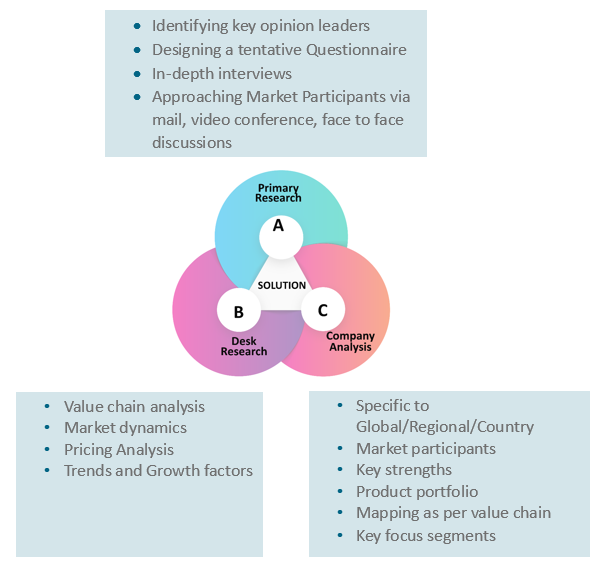
Key Inclusions
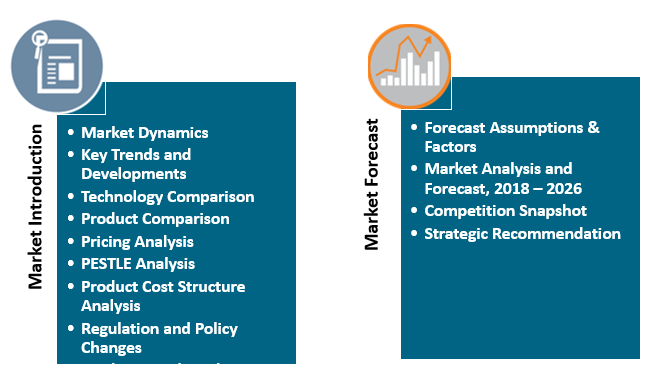
Reach to us
Call us on
+91-74002-42424
Drop us an email at
sales@absolutemarketsinsights.com
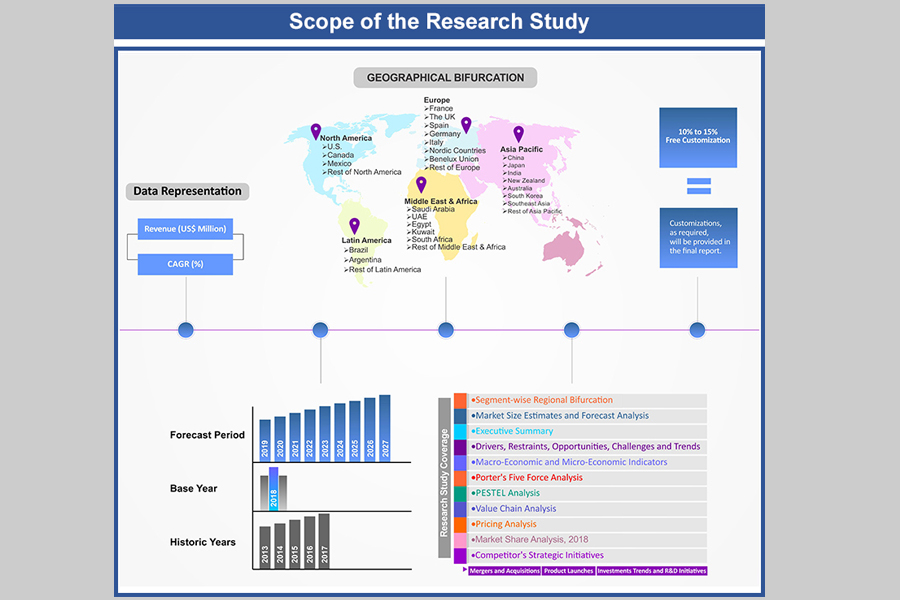
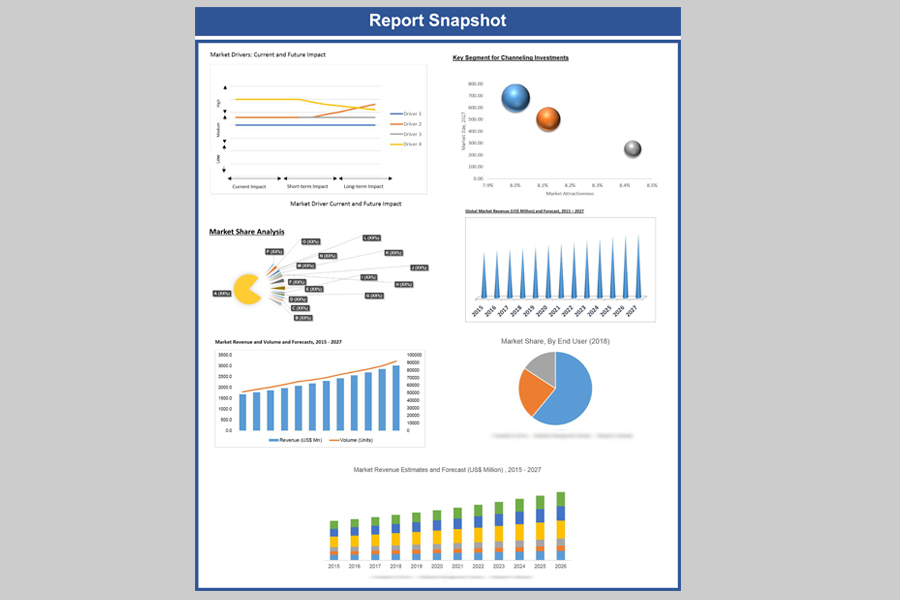
Why Absolute Markets Insights?
An effective strategy is the entity that influences a business to stand out of the crowd. An organization with a phenomenal strategy for success dependably has the edge over the rivals in the market. It offers the organizations a head start in planning their strategy. Absolute Market Insights is the new initiation in the industry that will furnish you with the lead your business needs. Absolute Market Insights is the best destination for your business intelligence and analytical solutions; essentially because our qualitative and quantitative sources of information are competent to give one-stop solutions. We inventively combine qualitative and quantitative research in accurate proportions to have the best report, which not only gives the most recent insights but also assists you to grow.
